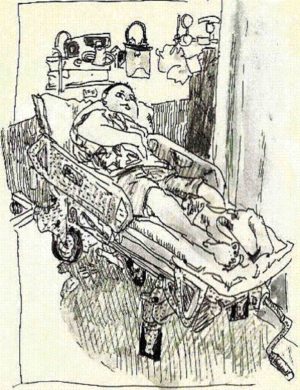
Movies and TV shows always portray cancer patients, particularly those afflicted with leukemia, on their deathbeds. They’re often pale with black undereye circles and hooked up to machines. As a result, many people see cancer as a death sentence.
“We want to break the myth that cancer is incurable,” said Dr. Dennis Tudtud, previous president of the Philippine Society of Medical Oncology (PSMO). “The technology available now has made cancer a chronic disease.”
He and several other doctors participated in a gathering in support of World Cancer Day (WCD) last week. Held annually on Feb. 4, WCD is one of the platforms used to promote the global commitment against cancer through increased awareness, prevention and urgent action.
This year, the WCD campaign included awareness and prevention against melanoma, head and neck, Hodgkin’s lymphoma, gastric and bladder cancer.
Aside from sticking to a healthy lifestyle that includes sufficient sleep, moderate exercise and a diet with fruits and vegetables, doctors have long cautioned against cigarette smoking and excessive alcoholic drinks.
Risk
“Everyone is at risk,” said Dr. Claire Soliman, PSMO president. “Adults over the age of 40 need to have themselves tested annually for common cancers. Women who have not had children before 35, and men who experience difficulty in urinating or notice blood in their urine should likewise have themselves tested,” she added.
As in most illnesses, early detection followed by the appropriate treatment is key. “When people talk of cancer, there’s often a stigma attached to it: certain death,” Tudtud said.
Instead of heeding warnings or symptoms and getting themselves checked by a doctor, some people prefer not knowing. “The thinking is, ‘Cancer happens to other people, not to me,’” said Dr. Nelia Tan-Liu, pathologist at the Lung Center of the Philippines.
“Patients should be more proactive especially if they come from families with a strong history of cancer. Our patients now are willing to learn. They research and actively participate by talking with their doctors on how to fight cancer,” she said.
Government’s response
According to information from MSD, a supporter of WCD, seven Filipino adults die of cancer every hour, and eight children die of the disease daily. In response to the epidemic, the government launched the Philippine Cancer Control Program in the early 1990s.
Today, there are a number of legislative actions in both the House of Representatives and the Senate to further strengthen the ongoing government program.
The “Hope from Within: Test, Talk, Take Action” lung cancer coalition was highlighted at last week’s event for its efforts to spread the value of lung cancer prevention, early detection and new treatment options. Started in 2016, Hope from Within is an advocacy of the Department of Health, medical societies and the Philippine Alliance of Patient Organizations.
“With the advent of advanced technology with a multidisciplinary approach, and targeted treatments with manageable side effects, soon cancer might no longer be seen as ‘the end’ for those who are diagnosed,” said Dr. Conrado Lola, president of the Philippine Society of Oncologists.
For a list of hospitals and health centers, visit www.psm.org.ph.

